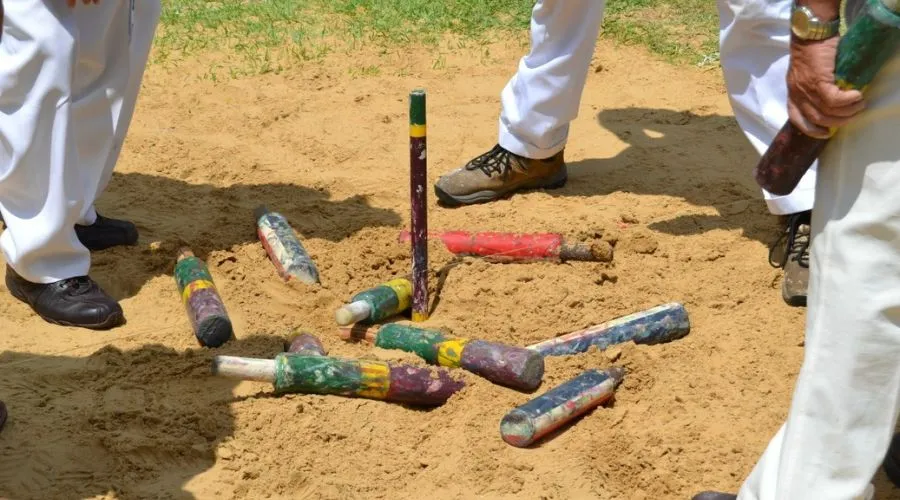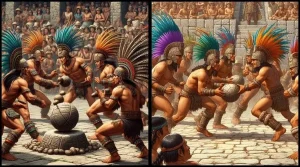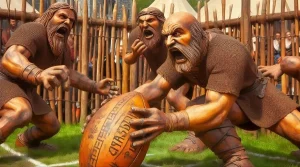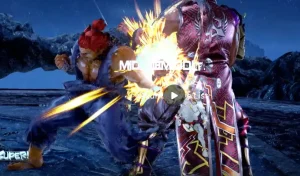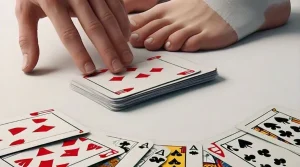Jukskei is a traditional South African game with a long history that goes back to the early days of the country. It started among Afrikaner nationalists and has grown from a simple activity to a competitive game played around the world.
In this article, we will look at the history, rules, and cultural importance of Jukskei, and how it became a popular sport in South Africa.
History
1. Early Origins
The exact beginnings of Jukskei aren’t known, but it is thought to have started with transport riders in the Cape during the early 1700s. As they traveled long distances with their ox-wagons, they would stop to rest their oxen and play a game.
This game involved throwing a long wooden peg, called a “jukskei,” at a target stuck in the ground. Much like the American game of horseshoe pitching, this became a regular activity for the Voortrekker pioneers during their long journey east and north in the 1800s.
2. Decline & Revival
As the Industrial Revolution brought railroads, ox-wagons became less common, and the culture of Jukskei began to fade. However, in the 1930s and 1940s, the Afrikaner people started to take a greater interest in sports, and it began to grow from a simple pastime to a competitive sport.
The first matches were played in Paarl at the end of 1939. During the symbolic ox-wagon trek of 1938, which marked the 100th anniversary of the Great Trek, Juk Skei quickly became popular across the country.
3. Jukskei Today
The sport is traditionally linked to the Afrikaners, and in 2001, the South African government included it in the Indigenous Games Project. Since then, the game has started to become popular with young people of all backgrounds.
In South Africa, this game is played at schools, clubs, and provincial levels, with an annual tournament held in Kroonstad in the Free State. It is also played in Namibia and the USA. These three countries are part of the International Jukskei Federation (IJF).
Basic Rules
- Objective: The goal is to knock over a peg planted in a sandpit from a distance of 10 to 16 meters, depending on the players’ age and gender.
- Teams: The game is played in teams, usually with four members each.
- Turns: Each player has two skeis (wooden pegs) and thus gets two turns.
- Playing Field: The field consists of two pits facing each other, allowing play in both directions.
- Scoring:
- Knocking over the peg scores three points.
- If the peg isn’t knocked over, the team with the skei closest to the peg scores points. They earn as many points as they have skeis closer to the peg than the other team’s nearest skei.
- Winning: The first team to score exactly 23 points wins. If a team scores more than 23 points, their score resets to 0.
Techniques & Strategies
- Throwing Techniques: There are different techniques to throw the skei. Some players prefer an underhand throw, while others use an overhand technique. The key is to find a method that provides control and accuracy.
- Aiming and Precision: Aiming is crucial in Jukskei. Players often take time to line up their shots, considering the distance and angle. Practice is essential to develop precision.
- Team Strategies: In team games, players can develop strategies to maximize their points. For example, one player might aim to knock over the peg while another tries to land close to the target for additional points.
As A Competitive Sport
- Tournaments and Competitions: It has grown as a competitive sport. There are local, regional, and national tournaments. These events bring together the best players to compete for titles and recognition.
- Training and Coaching: Many clubs offer training and coaching. This helps new players learn the game and improve their skills. Experienced coaches provide tips on technique, strategy, and mental focus.
- Famous Players and Teams: Over the years, several players and teams have gained fame in the Jukskei community. Their achievements inspire new players and contribute to the sport’s popularity.
Cultural Significance
1. In Afrikaner Culture
It is an important part of Afrikaner culture, reflecting the pioneering spirit and way of life of the Voortrekkers. This game is deeply connected to Afrikaner traditions and customs, making it a key piece of their cultural heritage.
2. Revival & National Significance
In the 20th century, Jukskei’s revival symbolized Afrikaner nationalism, representing a reclaiming of their cultural identity and celebrating their unique history. The game’s inclusion in national events, such as the centenary of the Great Trek, reinforced its status as a cultural icon.
3. Modern Celebrations
Today, it is still played at the National Indigenous Games Festival in South Africa every September, where traditional games are celebrated and preserved.
The Future
- Modern Challenges: Like many traditional sports, Jukskei faces challenges in the modern world. Competition from other sports and entertainment options can affect its popularity.
- Efforts to Promote: Efforts are being made to promote this to new generations. Schools and community centers are introducing the game to young people. Media coverage and online platforms also help in spreading awareness.
- Potential for International Growth: There is potential for it to grow beyond South Africa. Introducing the game to international audiences can create new opportunities and challenges.
The Cultural Impact
- A Symbol of Heritage: It is a symbol of South African heritage. It represents the ingenuity and creativity of the Voortrekkers.
- Connecting Generations: The game connects different generations, from older players who remember its historical roots to younger players who are learning it for the first time.
- A Community Activity: This is often played at social gatherings and community events. It brings people together and fosters a sense of community.
FAQs
Jukskei originated among Afrikaner nationalists in South Africa during the pioneering days of the country’s history. It is believed to have been played by transport riders in the Cape during the first half of the 18th century.
Q.2 Why is this game important to Afrikaner culture?
It is deeply intertwined with Afrikaner folk character, tradition, and customs, reflecting the pioneering spirit and way of life of the Voortrekkers.
It holds a special place in Afrikaner culture and is seen as a symbol of their unique history and identity.
Q.3 How is it being revived in modern times?
Organizations like the South African Jukskei Council help keep the game alive and popular even as times change. Events like Khel Khoj in India focus on bringing traditional games back into everyday life.
They help people feel proud of their cultural heritage and support the inclusion of these games in the Indian Knowledge System.
Q.4 Where is this played today?
It is played in South Africa, Zimbabwe, Namibia, and the United States of America. It is also celebrated at the National Indigenous Games Festival in South Africa every September.
Conclusion
Bringing Jukskei back to life means learning about its past, figuring out how to play it, and seeing how important it is to South African culture. It is a fun and special game from South Africa.
It takes skill, aim, and thinking ahead to win. By helping it stay popular, we can make sure lots of people keep enjoying it together.

